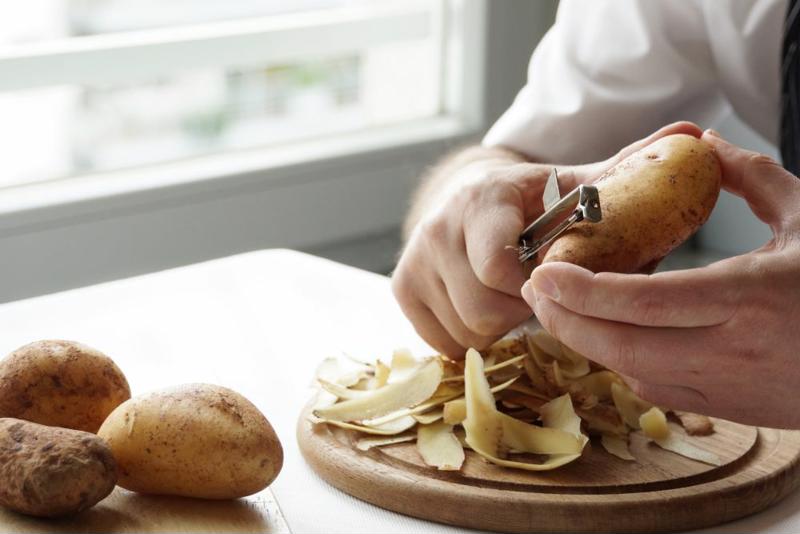Potato skins have been a popular bar and casual restaurant appetizer for decades. While the exact history is unclear, as it is for many dishes that weren’t developed and trademarked by a single company, the Idaho Potato Commission said the traditional preparation dates back to the mid-1960s. Restaurants in Washington, D.C. and Chicago, as well as national chain TGI Friday’s all have claims to inventing the potato skin as a distinct food.
The established history of the potato skin is good news for Austin culinary arts students. Recognition and familiarity among your customers make it easier to offer new varieties that put different ingredients and flavor profiles into play, allowing you to put a unique spin on this American classic.
 Put your potato peels to good use with this advice.
Put your potato peels to good use with this advice.Taking a fresh look at potato skins
Potato skins have a few important similarities to another distinctly American dish, the hot wing. Both skins and wings were once seen mostly as waste products – the Idaho Potato Commission said one apocryphal story described how skin consumption was common among sailors aiming to avoid nutrient-deficiency diseases – until enterprising restaurateurs invented dishes that appealed to local palates. Both are especially popular in bar, pub and casual restaurant settings, and both are widely available although recognized as calorie dense and best enjoyed in moderation.
Striking a balance between the classic perception of potato skins as bar food and using more unique ingredients you appeal to diners’ sense of adventure and comfort zones simultaneously. Let’s look at a few different approaches for offering fresh takes on potato skins.
Roast potato peels
If you’ve worked in an environment where prep cooks and other workers regularly peel potatoes, you may be familiar with the need to throw away, compost or otherwise dispose of large piles of potato peels. This form of skin isn’t suited for the traditional potato skin presentation, but it can provide a delicious alternative to French fries and turn a waste product into a money-maker for your restaurant.
The Kitchn shared a recipe for roasted potato peels that described the finished product as a mix between French fries and potato chips. The process is simple. Gather peels relatively soon after they’re made – don’t reserve peels for days afterward because they’ll become soft and unsuitable for this process. Preheat your oven to 400 degrees Fahrenheit and toss the peels with your desired seasonings. Roast for 15-20 minutes and stir midway through, then remove from the oven.
You can add cheese, scallions and other familiar potato skin toppings, as well as serve them with ketchup and other condiments and dips. You can also experiment with deep frying the skins for faster preparation in a restaurant environment.
Dress up the toppings
The classic potato skin recipe won’t change much, no matter how you serve them. Instead of classic ingredients like scallions, bacon, sour cream and cheddar or American cheese, consider a few other preparations.
Using a variety of other cheeses, like Gruyere, as recommended by The New York Times, can be a good start. Caramelized onions are another potential addition that add a new dimension of flavor without straying too far from the core concept. You can try transforming a variety of other dishes into potato skin form, such as making sausage sandwich filling – with grilled or sauteed sausage, peppers and onions – and spooning it into potato skins.
You may also want to draw on staples of various cuisines to craft new recipes. A Mexican potato skin incorporating seasoned chicken, cotija or queso blanco cheese and sour cream can put a new spin on this classic offering. Don’t be afraid to draw on your personal favorite recipes, experiment and serve test dishes to your friends, colleagues and coworkers to find a new take.


